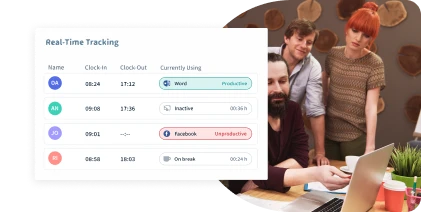Do you find balancing your personal and professional life hard due to a fixed work time?
If yes, a flexible schedule might be the perfect solution for you!
Did you know?
89% of companies experienced increased employee retention after adopting a flexible work schedule.
Such statistics define that a flexible work schedule is an effective tool for managing employee engagement and stress levels.
But what exactly is a flex schedule, and how does it work?
In this complete guide, we will explore everything you need to know about flex schedules, from:
- What is a flex schedule?
- The distinction between flex schedules and traditional fixed schedules
- What are the different types of Flex Schedules?
- What benefits do flex schedules bring for employers and employees?
To challenges and the solutions that come with Flex Schedules.
So join us on this journey as we take you through everything you need to know about flex schedules!
So, let’s get started by understanding:
What Is A Flex Schedule?
A flex schedule is a work arrangement that gives employees greater control over when and where they work. It offers flexibility in terms of the following:
- Hours worked
- Start and end times
- Location of work
The purpose of a flex schedule is to provide employees with the opportunity to align their work commitments with;
- Personal obligations
- Interests
- Preferences
It recognizes that not all employees thrive in the traditional 9-to-5, Monday-to-Friday structure and allows customization based on individual needs and circumstances.
Now let’s understand:
Difference Between Flex Schedules And Traditional Fixed Schedules
Flex and traditional fixed schedules represent two approaches to organizing work hours and routines.
Understanding the distinction between these two types of schedules can shed light on their benefits and differences.
Here are some key points to consider:
Flex Schedules
1. Flex schedules allow employees to adjust their work hours and, potentially, their work location.
2. It offers flexibility regarding when and where work is performed, allowing employees greater control over their schedules.
3. Employees may be able to customize their start and end times, work fewer days with longer hours, or work remotely.
4. Flex schedules prioritize work-life balance, accommodate personal obligations, and support individual preferences.
Traditional Fixed Schedules
1. Traditional fixed schedules follow a standardized routine where employees have set work hours and designated office locations.
2. They typically involve working specific hours per day or week, often from a centralized workplace.
3. Fixed schedules are based on a consistent daily or weekly routine that employees must adhere to.
4. Employees generally have less flexibility to adjust their work hours or location within the traditional fixed schedule framework.
Key Differences:
1. Control & Flexibility
Flex schedules give employees more control over their work hours and the ability to adjust their schedules according to personal needs and preferences.
In contrast, traditional fixed schedules have less flexibility and offer limited opportunities for customization.
2. Work-Life Balance
Flex schedules prioritize work-life balance by allowing employees to manage personal commitments more effectively.
Traditional fixed schedules may provide less flexibility and sometimes lead to challenges in achieving a satisfactory work-life balance.
3. Location Independence
Flex schedules often allow employees to work remotely or from alternative locations, reducing the requirement to be physically present in an office.
Traditional fixed schedules usually require employees to work from a designated workplace.
4. Adapting To Individual Needs
Flex schedules recognize employees’ diverse needs and preferences.
It provides options for adjusting work hours to accommodate personal obligations, such as;
- Childcare
- Education
- Other responsibilities
Traditional fixed schedules may be less accommodating in this regard.
Now, let’s look at the
What Are The Different Types Of Flex Schedules?
Hybrid Work
- Combines remote work and on-site work
- Employees split their time between working from home and the office
- Offers a balance between the benefits of remote work and the collaboration of in-person interactions
Telecommuting
- Employees work from a location outside the office, typically their homes
- Requires reliable internet access and remote communication tools
- Reduces commuting time and allows for a more flexible work environment
Remote Work
- Employees work entirely outside of a traditional office setting
- It enables individuals to work from anywhere, such as at home, in co-working spaces, or while traveling
- Provides autonomy and freedom to manage their schedules
Condensed Workweeks
- Employees work full-time hours on fewer days per week
- Commonly includes working four 10-hour days instead of five 8-hour days
- Allows for extended weekends and potential cost savings on commuting expenses
Flextime
- Employees have control over their start and end times
- Offers the freedom to adapt work schedules to personal preferences
- Increases work-life balance and accommodates individuals’ peak productivity hours
Part-Time Work
- Employees work fewer hours than full-time employees
- Provides flexibility for individuals with other commitments or responsibilities
- Allows for a better balance between work and personal life
Shift Work
- Employees work in rotating shifts that cover a 24-hour period
- Common in industries that require continuous operations, such as healthcare or manufacturing
- Offers flexibility for individuals who prefer or need non-traditional working hours
Job Sharing
- Two or more employees share the responsibilities and hours of one full-time position
- Enables individuals to maintain a work-life balance while still contributing to the organization
- Allows for specialized skills or expertise to be combined for greater productivity
Statistics Showing Why Flex Schedules Are On The Rise
1. 73% of employees said flexible work arrangements boosted their work satisfaction
2. 78% of employees reported being more productive when given flexible work arrangements.
3. Regarding evaluating future job opportunities, 77% of employees consider flexible work arrangements a significant factor.
4. 36% of employees are likely to quit their existing employer due to a lack of flexible work arrangements.
These statistics show that a flex schedule is here to stay, allowing employees to better manage their time and maintain a work-life balance. This leads to improved satisfaction and higher productivity.
Now that we know what flex schedules are and what benefits they offer, let’s take a closer look at:
Different Benefits Of Flex Schedules For Employers And Employees
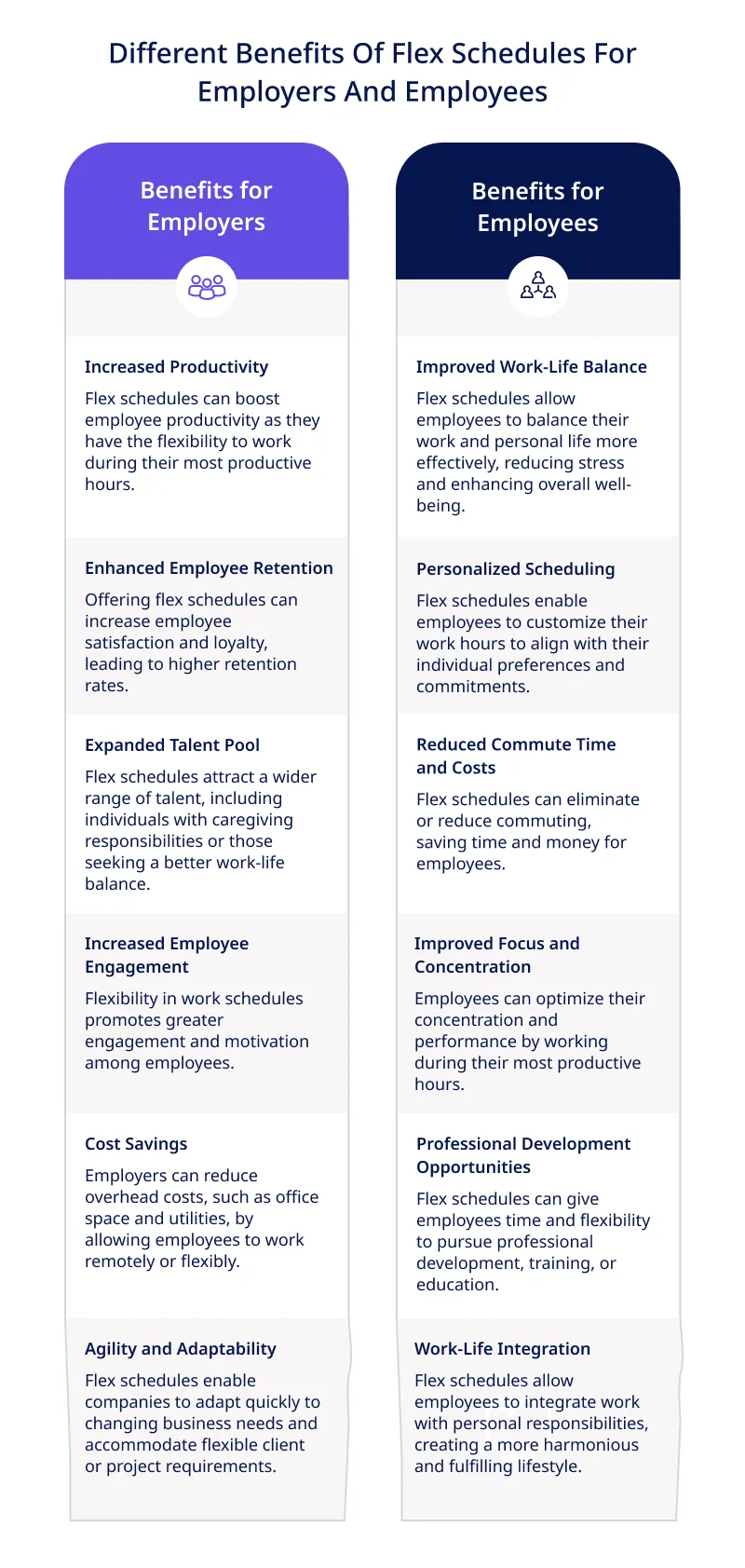
Now let’s move to the:
Flex Schedules In Focus: Navigating Challenges And Crafting Winning Solutions
Flex schedules offer numerous benefits but also present challenges that organizations need to address.

Luckily, Workstatus, a comprehensive workforce management tool, provides effective solutions to overcome these challenges and maximize the advantages of flexible work arrangements.
Let’s explore some common challenges and how Workstatus can help resolve them:
Challenge1: Tracking Employee Task Time In Varying Flextime Work Settings
There can be challenges in accurately tracking employee task time when working in a flexible schedule setting, as their tasks may vary in duration and complexity.
This can create difficulty in accurately assigning work hours and managing employee productivity.
Solution 1: Time Tracker For Effective Time Tracking
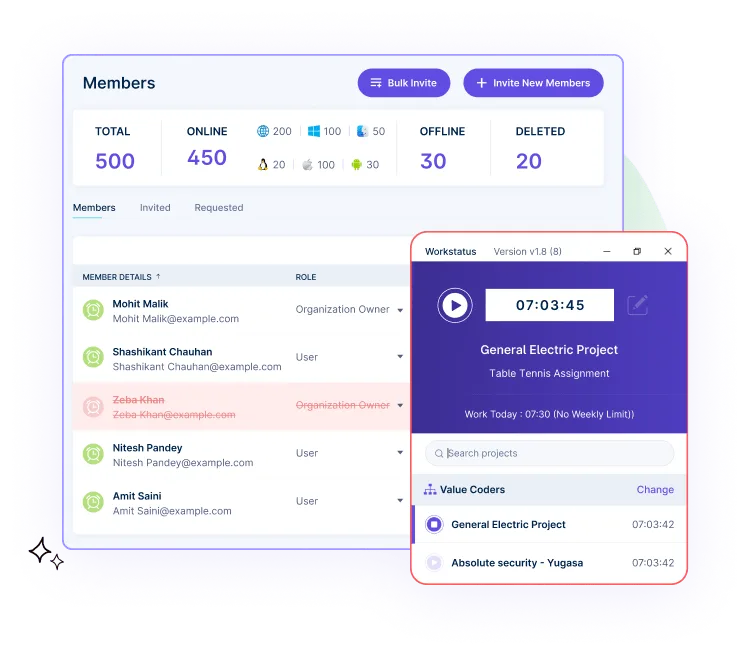
To address this, organizations can utilize time-tracking solutions provided by Workstatus. These solutions offer features such as:
- Automated time tracking to capture the time spent on various tasks and projects
- Integration with project management tools to associate time entries with specific projects or clients
- Reporting capabilities to analyze time usage patterns and identify areas for improvement
- This helps organizations to accurately assign work hours and manage employee productivity in different work schedules
Table of Contents
Challenge 2: Monitoring Activity And Accountability Of Flextime Employees
Ensuring employee activity and accountability can be challenging in a flextime work setting where employees have varying schedules and locations.
Solution 2: Employee Productivity And Activity Monitoring
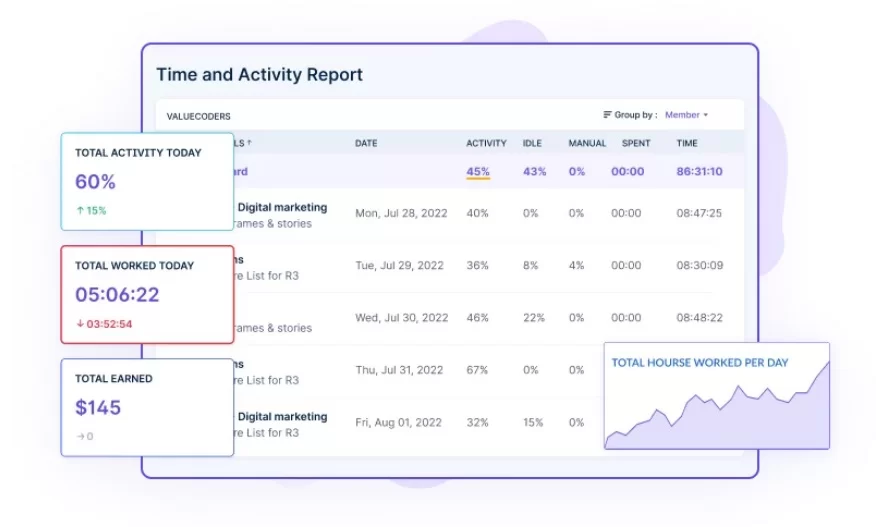
Organizations can implement employee productivity and activity monitoring solutions to address this challenge. These solutions offer the following benefits:
- Real-time tracking of employee activity, including active and idle time
- Monitoring application and website usage ensure employees stay focused on work-related tasks
- Screenshots or video recording features to verify work progress and maintain accountability
By implementing these monitoring solutions, organizations can maintain visibility into employee activity and promote accountability in a flexible work environment.
Challenge 3: Workload Distribution
Balancing workload is a challenge in any work setting, but it is even more difficult in a flextime setting where employees have varying schedules and locations, which leads to:
- Uneven workload distribution.
- Increased workload for some employees while others are idle.
- Decreased productivity for overloaded employees
Solution 3: Project Management
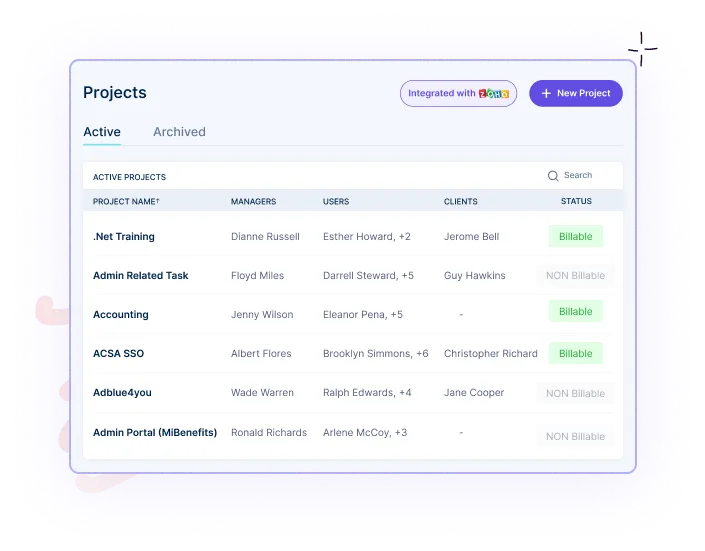
To address this challenge, an organization can use project management tools to divide the workload among team members. This allows for equitable distribution of work as these tools offer:
- Task assignment and tracking functionalities to distribute and monitor workload
- Collaboration features for effective communication and coordination among team members
- Prioritization and deadline management capabilities to ensure timely completion of tasks
By implementing robust project management practices, organizations can address workload distribution challenges and maintain productivity in a flexible work setting.
Challenge 4: Schedule Coordination
Coordinating schedules and tasks among flextime employees can be complex, especially when overlapping or conflicting timeframes exist. This can lead to:
- Missed deadlines
- Incomplete tasks
- Increased employee stress
Solution 4: Schedule & Task Management
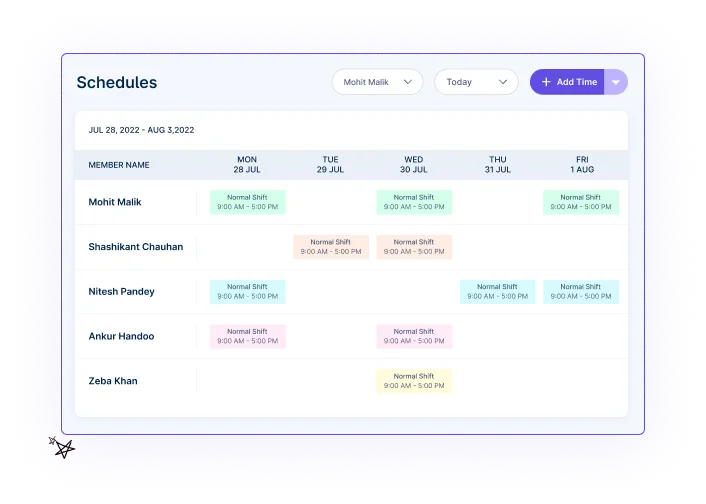
To address this challenge, an organization can utilize schedule and task management features offered by Workstatus. Explore functionalities such as:
- Detailed scheduling capabilities to manage tasks and deadlines
- Task management features to track work progress and assign appropriate resources
- Reporting features to monitor results and make necessary changes
- Advanced collaboration to view and share schedules with other team members
By implementing these solutions, organizations can effectively coordinate schedules and tasks among flextime employees and ensure the timely completion of tasks.
Challenge 5: Performance Evaluation
Evaluating employees’ performance in a flexible work setting can be challenging, as their productivity and hours worked may be difficult to measure in different work scenarios.
Solution 5: Reports and Analytics
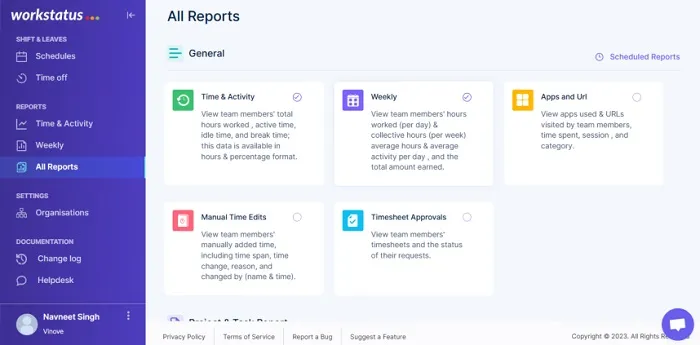
To address this challenge, an organization can use the Reports and Analytics features offered by Workstatus. These features offer the following benefits:
- Detailed performance reports measuring employee productivity and Hourly Wage accrual
- Daily, weekly, and monthly reports to track changes in employee productivity and hours worked
- Advanced reporting capabilities to analyze data in more detail
- Visualizations and graphs to understand the data more easily
By using Reports and Analytics solutions from Workstatus, organizations can effectively evaluate employees’ performance in a flexible work setting.
Now let’s finally move on to:
Considerations For Implementing A Flex Schedule
Assessing Job Suitability For Flexible Work Arrangements
Implementing a flex schedule requires evaluating the nature of each job within the organization to determine its suitability for flexible work arrangements. Considerations may include:
- Identifying roles that can be effectively performed remotely or with alternative schedules
- Assessing the impact of flexible work arrangements on job responsibilities and deliverables
- Considering the level of collaboration and interaction required for each role
Communication And Collaboration Strategies
Effective communication and collaboration are crucial when implementing a flexible schedule. Organizations should consider the following:
- Establishing clear communication channels to ensure effective information sharing
- Utilizing online collaboration tools to facilitate teamwork and virtual meetings
- Promoting regular check-ins and updates to maintain team cohesion and coordination
Technology And Infrastructure Requirements
Implementing a flex schedule often requires the support of appropriate technology and infrastructure. Key considerations include:
- Ensuring employees have access to necessary hardware, software, and communication tools
- Evaluating the need for secure remote access and data protection measures
- Providing training and support to ensure employees are proficient in utilizing remote work technologies
Legal And Regulatory Considerations
Organizations must navigate legal and regulatory considerations when implementing a flex schedule. These may include:
- Complying with labor laws, employment contracts, and collective bargaining agreements.
- Addressing privacy and data protection regulations when remote work involves handling sensitive information.
- Adhering to occupational health and safety regulations to ensure a safe working environment, even in remote settings.
Addressing Potential Challenges And Resistance
Implementing a flexible schedule may face challenges and resistance from employees or stakeholders. Organizations should:
- Anticipate and address concerns about productivity, accountability, and work-life balance
- Provide training and guidance to managers on managing remote or flexible teams effectively
- Foster a culture that embraces flexibility and encourages open dialogue about the benefits and challenges of a flexible schedule
By considering these factors, organizations can successfully implement a flexible schedule and reap the benefits of enhanced productivity, improved employee satisfaction, and a more adaptive and resilient workforce.
Next Steps
In conclusion, a flex schedule refers to a work arrangement that offers employees flexibility in determining their working hours and location.
It allows individuals to have a:
- Better work-life balance
- Increased autonomy
- Improved productivity
With a flexible schedule, employees have the freedom to choose when and where they work as long as they meet their job responsibilities and deadlines.
One tool that can greatly assist in implementing and managing flex schedules is Workstatus.
Workstatus provides effective time tracking and remote team management solutions, allowing businesses to seamlessly transition to flexible work arrangements.

